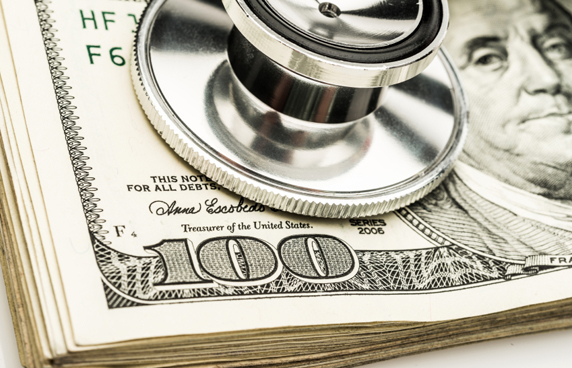All eyes are on the budget bill making its way through Congress that will gut healthcare coverage for low-income Americans who rely on public insurance such as Medicaid and the Affordable Care Act.
But costs for households that have employer-sponsored health coverage are also skyrocketing, eating into paychecks and leaving less money for food, housing and other expenses. And the trend shows that, for Black families, costs including healthcare premiums are taking an even bigger bite.
LEARN MORE: RFK Jr. Shrugs at $700B in Medicaid Cuts That Hurt Black People
The annual report from the Milliman Medical Index finds that healthcare costs for the average hypothetical family of four have almost tripled since 2005.
“Annual growth has averaged 6.1%, far outpacing any other household expense,” says Deana Bell, a principal and consulting actuary with Milliman. “No other cost category has risen as steeply or as consistently over the past two decades.”
Costs Higher for Black, Latino Families
The MMI report doesn’t include specific numbers for Black families. However, research the JAMA published in December has found that Black households, on average, pay higher insurance premiums for employer-sponsored health care benefits than white households. These costs have risen faster than workers’ wages for several decades — and the increases are before paying to actually receive care.
The report also finds these increases have led to continued earnings disparities and wage stagnation for Black families.
“In all 32 years of the study, health care premiums as a percentage of compensation were significantly higher for non-Hispanic Black and Hispanic families than for non-Hispanic White families,” the JAMA report researchers found.
Black and Hispanic families with [employer-sponsored insurance], lost a higher percentage of their wages than white families with [employer-sponsored insurance], to increasing health care premiums
2024 JAMA REPORT ON HEALTHCARE COSTS
The MMI index calculates costs based on a four-person family with a 47-year-old male, a 37-year-old female, a four-year-old child, and one infant. Milliman has an online tool that individuals can use to estimate the healthcare costs for their families this year.
Two decades ago, the annual health care cost for that family was slightly more than $12,200. The costs include premiums, inpatient facility care, outpatient facility care, professional services, pharmacy expenses, and other services.
Now, that same family would have to pay more than $35,000 to have the same care. And insured individuals will likely have more than $7,800 in healthcare costs this year, and more than one-third of this amount will be out-of-pocket costs.
Healthcare costs for the average person increased almost 7% in 2025 and pharmacy costs increased by 9.7%. Outpatient facility care costs rose 8.5% this year, which means costs from these facilities have ballooned 286% since 2005.
Premiums Are Up, Wages Are Not
Meanwhile, wages haven’t kept up and have increased by roughly 84% over the same time period.
“Moreover, Black and Hispanic families with [employer-sponsored insurance], lost a higher percentage of their wages than white families with [employer-sponsored insurance], to increasing health care premiums,” according to the report. “By 2019, health care premiums as a percentage of compensation were 19.2% for Black families and 19.8% for Hispanic families, while they were only 13.8% for White families.”
RELATED: Critical Condition: Health Disparities Include Health Insurance
“By receiving lower earnings historically, Black and Hispanic households shoulder a greater proportion of the increase in health care premiums as a percentage of their compensation, a trend that persisted throughout all three decades of our analysis,” according to the JAMA report.
In 2022, just over 56% of Black Americans had private health insurance, compared to three-quarters of whites. Just over 45% of Black people were covered by Medicaid or other public health insurance and 8% were uninsured. Only 5% of white Americans were uninsured.
When they are able to get health insurance, Black people are more likely to have “junk plans” that feature high-deductibles or limited coverage. This means they have higher out-of-pocket expenses and are more likely to be denied coverage for legitimate healthcare expenses.





